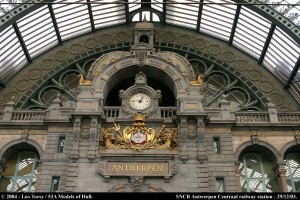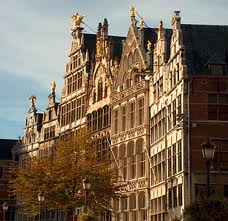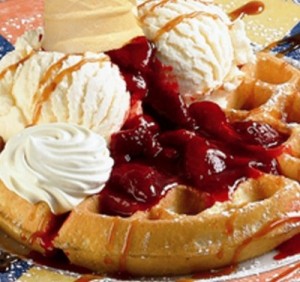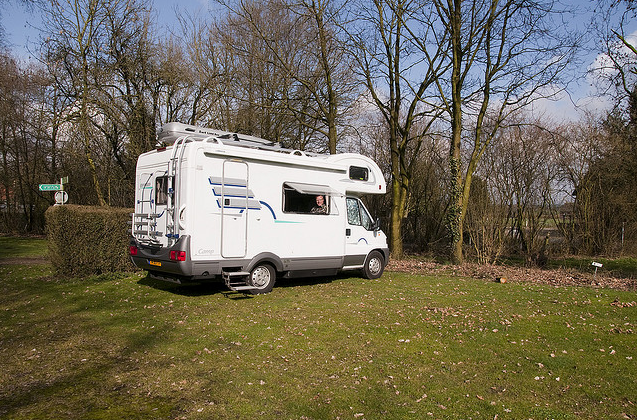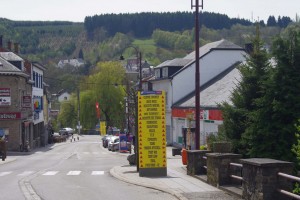The writer of the this article is Rishad Saam Mehta, an avid traveler, writer and photographer who writes for the Mumbai Mirror among many other dailies and magazines including international ones.
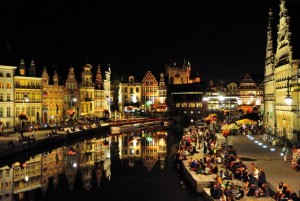 Ghent Canal is a busy evening hang-out place
Ghent Canal is a busy evening hang-out place
Travel practicality suggests that you should try to arrive at a city during daylight hours so that you get a feel of the city and set your bearings. Ghent, which has always been a contemporary city, would encourage you to arrive after the sun sets. Because it’s citizens know that should you arrive during that lovely twilight hour when the sun has just dipped below the horizon and the sky yet tells of its presence a few minutes ago, there is no way that you could not at once fall in love with Ghent.
This city with the lovely waterways that so gorgeously reflect its history and it articulate architecture remains my favourite city in Flanders, and I might also say in all of Belgium.
We arrived just before sunset into this city of students, tourists and businessmen alike and checked into the Hotel Harmony, which is a fantastic four-star boutique hotel situated in the heart of the city in an old neighbourhood called Patershol. Some of the cosy rooms look out over the historical city centre of Ghent.
We spent some time sighing over the views and then left for dinner which was at Brasserie Bord’eau, a short walk away. This restaurant is situated right on the canals edge and housed in an old Fish Market. The food was delectable and the views were stunning since as the light faded, the famous lights of Ghent went on.
Ghent doesn’t have streetlights, instead all its lights are pointed at its gorgeous architecture and these come on every night and light up the city in a unique and pretty way. In fact a night walk of Ghent is a must-do for every visitor.
So we set off after our dinner and eventually arrived at the promenade in front of the Ghent Marriott Hotel. Buzzing is the word that comes to mind when I cast my mind back to that place at that time.
Students and tourists and locals alike were hanging out by the canals edge. Some of them had spread picnic mats and were having dinner there, others were swigging Belgians national beverage — beer. Oh, but stop me before I start off about the beer. Belgian beer is one of the pleasures you will discover in this little country where this beverage is brewed with passionate enthusiasm and stubborn traditionalism.
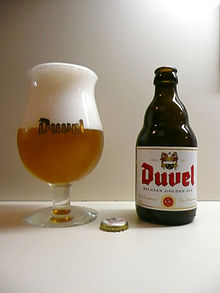 Belgique Beer
Belgique Beer
But back to the canal’s edge and its students, Ghent has always been a city of people who are notorious for their dislike of authority. The history of the city has been interspersed with revolt. In May 1540, Charles V, the emperor, of the time humiliated protesting subjects by forcing them to wear nooses around their necks and beg for mercy. The people of Ghent still wear those nooses as a matter of pride at the city’s festival parade and Ghent people are still nicknamed “noose-wearers” by fellow Belgians. In fact should you take canal boat cruise from opposite the Marriott — a very nice thing to do since they serve you champagne and tapas on the boat — the boat will go past a statue of a man wearing a noose.
Even today should someone whom the students don’t approve of be hired for a post in the university, the students will rise in protest until he or she is removed.
We continued our walk through the pretty city through narrow alleyways canals that once housed drinking houses and brothels when Ghent was a very important trading post, but today in these very locations stand boutiques, chocolatiers and lovely restaurants. Another one that you should absolutely eat at is the Belga Queen. But be warned that their delicious roast knuckle of ham is a meal big enough for three. Besides that, the building and the interiors are absolutely charming.
The next day we spent the morning walking around the city taking in the 12th-Century Castle Of The Counts, which was built not to defend against invading foreigners but to protect the city chiefs from the civilians, and the St. Bavo’s Cathedral which houses an impressive number of art treasures. If you are strong of thigh then you can climb the 444 steps of the tower and take in fantastic views of the city with its red roofs and Gothic architecture.
Ghent is a little-known city and most tourists skip it. But visit it and you’ll be at once charmed by one of Flanders best kept secrets.
Rishad Saam Mehta
14 Oct 2011
http://www.thehindu.com/life-and-style/travel/article2537546.ece
Average Rating: 4.7 out of 5 based on 158 user reviews.
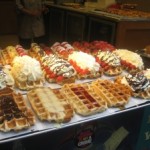 I sat down at a famed tea-room, Del Rey, for waffles. Belgians eat waffles as an afternoon snack — either warm with fruit, cold, plain or dipped in chocolate. Also on offer was a selection of pastries, biscuits and of course, loads of chocolates.
I sat down at a famed tea-room, Del Rey, for waffles. Belgians eat waffles as an afternoon snack — either warm with fruit, cold, plain or dipped in chocolate. Also on offer was a selection of pastries, biscuits and of course, loads of chocolates.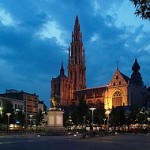 De Kathedraal, a wonderful Gothic-style cathedral, has several Peter Paul Rubens panels — for example, The Raising of the Cross (1609), The Resurrection of Christ (1612) and The Descent from the Cross (1612). There are also nine confessionals, made of beautiful oak paneling that was moved to Antwerp after the French Revolution. The paintings, and the cathedral, are stunning.
De Kathedraal, a wonderful Gothic-style cathedral, has several Peter Paul Rubens panels — for example, The Raising of the Cross (1609), The Resurrection of Christ (1612) and The Descent from the Cross (1612). There are also nine confessionals, made of beautiful oak paneling that was moved to Antwerp after the French Revolution. The paintings, and the cathedral, are stunning.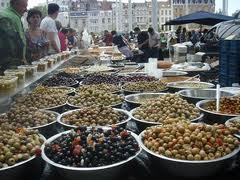 Olives at the Theaterplein Market
Olives at the Theaterplein Market